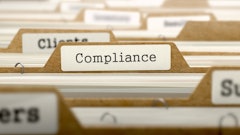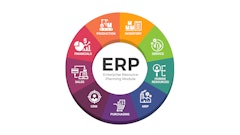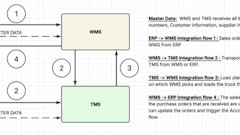
Ask any healthcare leader, “what keeps you up at night,” and you’re likely to hear some variation of “delivering the highest quality care at the lowest possible cost” as the answer. A recent survey underscores this where 83% of participating healthcare CFOs agreed that cost reduction was an increased strategic priority.
One area not to be overlooked by CFOs and others seeking significant savings opportunities is the antiquated accounts payable (AP) process across healthcare.
Unlike other industries – such as retail and manufacturing that have embraced modern, technology-driven approaches – management of purchasing and AP in healthcare still largely comprises manual, paper-based processes.
In fact, as many as 70% of all healthcare invoices are paper-based and nearly 85% of all healthcare purchasing is still done manually via paper checks, as evidenced from a Premier Inc. webinar. Across the healthcare industry, these transactions can add as much as $18 billion to $22 billion in unnecessary annual expenses, according to PINC AI data. On top of that, simple invoicing errors associated with paper transactions delay payments to suppliers by an average of 61 days, says Ibid.
So, why has healthcare lagged behind? Three main reasons:
- AP processes at most healthcare organizations are complex and fragmented, leading to errors starting at order origination, continuing through the invoicing process and ending in inaccurate payment.
- Healthcare organizations typically have numerous products and processes in play with supply chain information living in multiple, disparate systems. As one example, there are over 1,100 unique ways that one specific supplier’s name is built into national enterprise resource planning (ERP) systems. The increased complexity of disparate systems only amplifies when we then layer in the tens of thousands of products they sell to providers.
- While ERP platforms are effective for managing core supply chain functions like contract standards, on their own, most ERPs lack the sophisticated capabilities essential to seamlessly process invoices, payments, discounts and exceptions.
Automated purchasing and payment solutions, known as e-invoicing and e-payables, can solve this and their benefits to healthcare organizations simply can’t be ignored.
How e-invoicing and e-payables work
E-invoicing technology converts paper and PDF purchase orders (POs) and invoices into a digital format to automate, streamline and simplify the purchasing and invoicing processes. The touchless integration of the newly created digital format into a healthcare organization’s purchasing systems is what creates value.
Progressive e-invoicing systems leverage artificial intelligence (AI) to cleanse invoices of predictable and correctable errors as they are integrated. This eliminates the necessity of human intervention, which is one of the major sources of unnecessary errors.
E-payables (ePay) is commonly understood as digitized and touchless payments further leveraging the automation of e-invoicing technology. ePay can include virtual credit cards, Automated Clearing House (ACH), wire transfers, enhanced ACH (or ACH+) and even digital check printing if necessary.
Here are five of the most powerful ways healthcare organizations, including hospitals, health systems and all in the continuum of care can get ahead with AP automation:
1. Relieve administrative burden and reduce waste. It’s estimated that 30% of an AP professional’s time is spent chasing and correcting inaccurate invoice information. With 17% of invoices having “match exceptions” or errors that, in large part, can be rectified through automated cleansing, AP professionals could spend their time on more strategic initiatives. Furthermore, the shift from paper to digital reduces invoice processing time by an average of 10.6 days.
2. Decrease expenses. The difference in the cost of a paper invoice vs. a digital invoice is $12. To put this into perspective, let’s say 25 healthcare organizations collectively process 14 million invoices in a year. On the low end, if we assume that 50% of those invoices were paper, the organizations could have saved $84 million over the year just by using an automated solution. Savings can also be found in electronic payment transactions, which average $4 per transaction vs. check payments, which average $7 per check.
3. Qualify for prompt pay discounts. Prompt pay discounts offered by suppliers encourage healthcare organizations to pay their invoices within a certain time period, and they’re a win-win for all parties involved -- discounts can provide significant cash return to healthcare organizations; quicker payment and reconciliation can improve suppliers’ working capital; and suppliers can quickly become preferred vendors, with the possibility to earn more business from healthcare organizations using e-payables over the long term.
4. Improve relationships with suppliers and other partners. Paper AP solutions can lead to missed or late payments that hurt a healthcare organization’s relationships with vendors, not to mention the organization’s credit rating, making it difficult to secure loans or other financing at a competitive rate. Late or missed payments also affect an organization’s cash flow, supply chain integrity and even patient care when critical supplies cannot be procured when they’re needed most. Simply put, AP automation makes good business sense, ensuring that invoices get paid on time, every time.
5. Reduce the risk of fraud and theft. Reliance on paper and human hands to move it along the procure-to-pay (P2P) continuum makes fraud and theft all too easy, which could compromise security within the healthcare supply chain. What’s more, paper-based AP processing can place financial data and patient security at risk. E-invoices and e-payments are digitized and encrypted to ensure a safe, hands-free exchange between supplier and healthcare organization, cutting down on the opportunity for fraud and document forgery.
AP automation is changing the trajectory of healthcare purchasing for the better
Clearly, technology can help solve the biggest challenges within the outdated healthcare AP process – modernizing how healthcare organizations and their suppliers interact along the purchasing and payment journey. In the near term, healthcare leaders can expect overhead expenses to decrease and workforce productivity to increase; in the long term, they can expect that more predictive working capital management will yield opportunities to deploy AP resources more strategically.
![Pros To Know 2026 [color]](https://img.sdcexec.com/mindful/acbm/workspaces/default/uploads/2025/08/prostoknow-2026-color.mduFvhpgMk.png?auto=format%2Ccompress&bg=fff&fill-color=fff&fit=fill&h=100&q=70&w=100)







![Pros To Know 2026 [color]](https://img.sdcexec.com/mindful/acbm/workspaces/default/uploads/2025/08/prostoknow-2026-color.mduFvhpgMk.png?ar=16%3A9&auto=format%2Ccompress&bg=fff&fill-color=fff&fit=fill&h=135&q=70&w=240)









